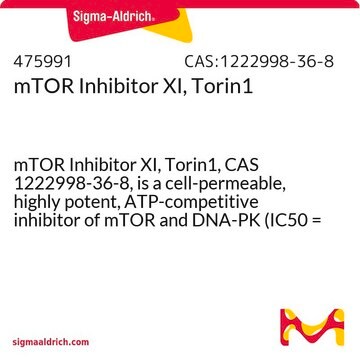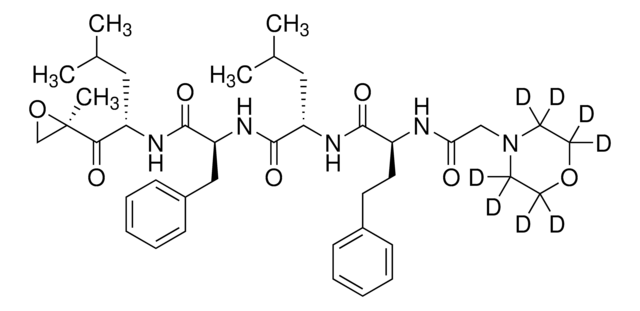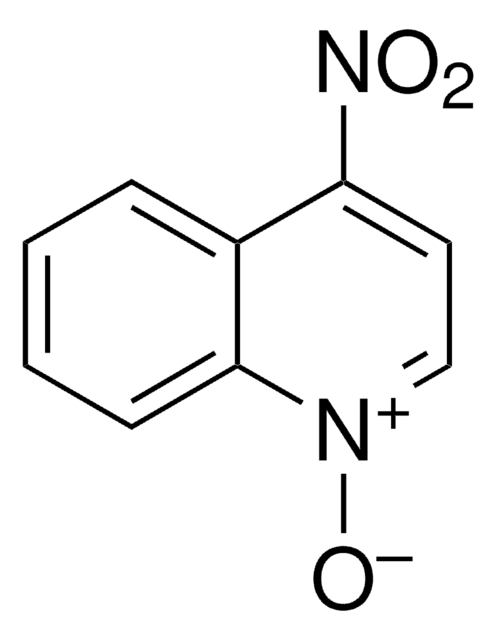SML1916
Marizomib
≥95% (HPLC), (Salinospora tropica)
Synonyme(s) :
(1R,4R,5S)-4-(2-Chloroethyl)-1-[(S)-(1S)-2-cyclohexen-1-ylhydroxymethyl]-5-methyl-6-oxa-2-azabicyclo[3.2.0]heptane-3,7-dione, NPI-0052, Salinosporamide A
About This Item
Produits recommandés
Niveau de qualité
Source biologique
(Salinospora tropica)
Pureté
≥95% (HPLC)
Forme
powder
Conditions de stockage
desiccated
Couleur
white to beige
Conditions d'expédition
wet ice
Température de stockage
−20°C
InChI
1S/C15H20ClNO4/c1-14-10(7-8-16)12(19)17-15(14,13(20)21-14)11(18)9-5-3-2-4-6-9/h3,5,9-11,18H,2,4,6-8H2,1H3,(H,17,19)/t9-,10+,11+,14+,15+/m1/s1
Clé InChI
NGWSFRIPKNWYAO-SHTIJGAHSA-N
Application
- to study its effects on glioblastoma cell lines
- to analyze its effects on the aging of killifish brain
- to test its effect on protein kinase B (PKB/AKT) levels in multiple myeloma cells
Actions biochimiques/physiologiques
Code de la classe de stockage
11 - Combustible Solids
Classe de danger pour l'eau (WGK)
WGK 3
Point d'éclair (°F)
Not applicable
Point d'éclair (°C)
Not applicable
Certificats d'analyse (COA)
Recherchez un Certificats d'analyse (COA) en saisissant le numéro de lot du produit. Les numéros de lot figurent sur l'étiquette du produit après les mots "Lot" ou "Batch".
Déjà en possession de ce produit ?
Retrouvez la documentation relative aux produits que vous avez récemment achetés dans la Bibliothèque de documents.
Notre équipe de scientifiques dispose d'une expérience dans tous les secteurs de la recherche, notamment en sciences de la vie, science des matériaux, synthèse chimique, chromatographie, analyse et dans de nombreux autres domaines..
Contacter notre Service technique







